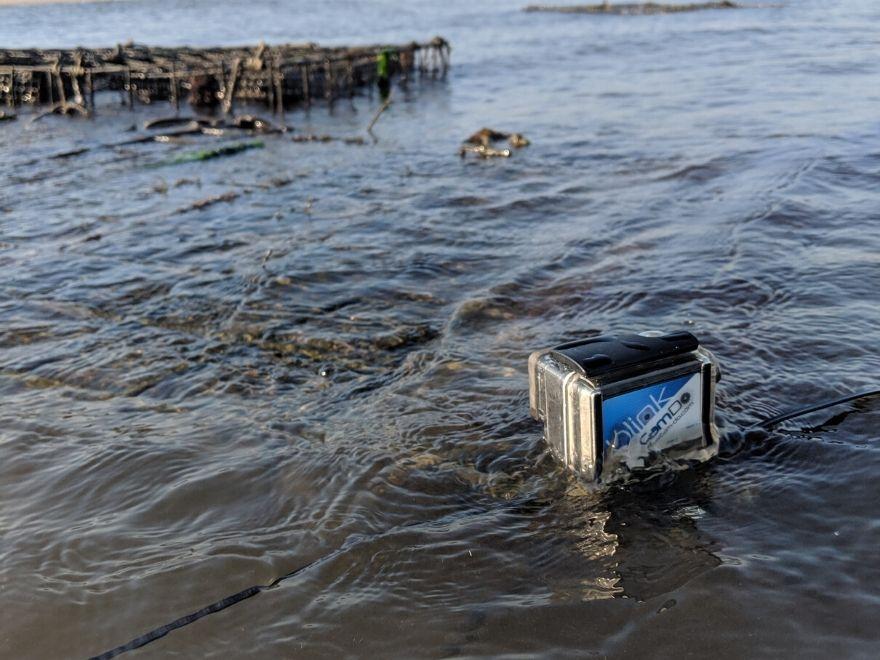While the majority of our customers use our products for construction time lapse projects, we also see some very interesting and unique applications as well. Namely, customers who are using our products to study what happens below the waters’ surface.
CamDo customer Jenny Shinn submitted a collaborative research project started in Long Island Sound aims to document interactions of oyster farms and aquatic wildlife. Learning what fish and mobile invertebrates (crabs, shrimp, snails, etc.) use the farm gear as habitat provides a better understanding of the benefits an oyster farm provides to the environment.
The project was developed a few years ago by partners at the NOAA Fisheries Northeast Fisheries Science Center, Milford Laboratory and the work by the team at Rutgers University, Haskin Shellfish Research Lab extended that project to Barnegat Bay, New Jersey in 2018.Dr. Daphne Munroe is the lead scientist on this project and collected all of the video footage thus far.
The team also collected footage along the edge of an adjacent marsh to compare the farm results with. They observed specific behaviors of the fish such as feeding, mating, and hiding to document specifically how they interact with the farm. In 2018, they observed 21 different species using the habitats! Why is this important? The results of this research may be used to inform regulatory and management decisions surrounding oyster aquaculture in the Northeastern US.
For this project, they used Blink Time Lapse Controllers (note: Blink is now been replaced by BlinkX or UpBlink) on point-of-view cameras (GoPro 3 Hero+) for two reasons:
- To delay onset of recording to allow for recovery from minor disturbance of camera deployment.
- To capture footage at 8-minute intervals across a complete 12-hour tidal cycle in the Bay.
The cameras were either affixed to the farm gear (floating bags or cages containing the oysters) or set on a platform facing the marsh edge.
This project unsurprisingly didn’t come without its challenges. Collecting video footage that had good enough visibility to see fish and other critters moving around in a New Jersey estuary turned out to be challenging. The area experiences turbid waters at times that are full of sediment and plankton. To get around this, repetition and selecting calm weather days were key.
The team is currently analyzing video footage collected in 2019 and plan to deploy cameras in the summer and fall of 2020.
About the Team
Dr. Daphne Munroe is an Associate Professor at Rutgers University, Haskin Shellfish Research Lab. Her main research interests include coastal ecosystem interactions, shellfish aquaculture and larval ecology.
Jenny Shinn is a Program Coordinator at Rutgers University, Haskin Shellfish Research Lab. She coordinates community education programs and assists with research projects.
For more information, visit the Haskin Shellfish Lab website or follow Daphne Munroe’s lab onTwitter orYouTube.


